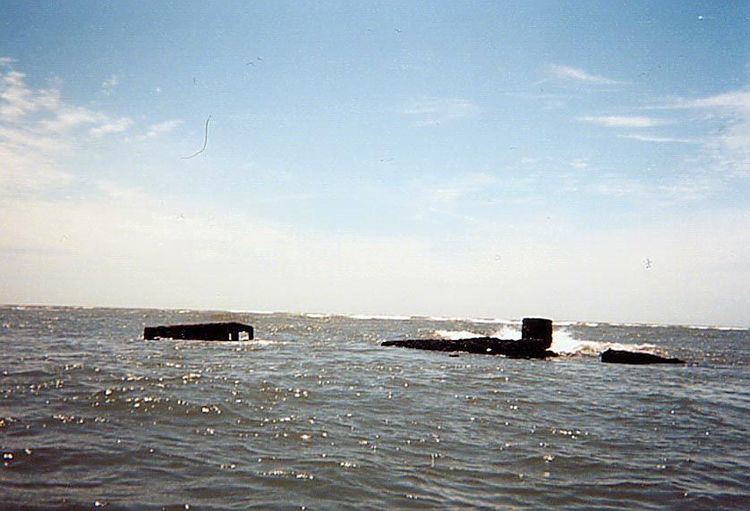Laid down date unknown Commissioned 25 June 1863 Struck 1864 (est.) Length 44 m Displacement 384,600 kg | Acquired 28 April 1863 Out of service 11 January 1864 Launched 1862 Weight 430.8 tons Draft 3.81 m | |
 | ||
Fate ran aground and burned
11 January 1864 | ||
USS Iron Age (1862) was a steamer acquired by the Union Navy during the American Civil War. She was used by the Navy to patrol navigable waterways of the Confederacy to prevent the South from trading with other countries.
Contents
- Iron Age searches for the CSS Tacony
- Assigned to the North Atlantic Blockade
- Destroying valuable Confederate salt works
- Wreck of the USS Iron Age
- References
Iron Age was built at Kennebunk, Maine, in 1862; then purchased by the Navy at Boston, Massachusetts, 28 April 1863 and commissioned 25 June 1863, Lt. Comdr. E. E. Stone in command.
Iron Age searches for the CSS Tacony
That day she sailed from Boston in search of Confederate commerce raider, CSS Tacony, which was taking a heavy toll of New England shipping. After learning that the enemy cruiser had been burned and her crew captured, Iron Age returned to Boston 7 July. She spent the rest of the summer in New England waters protecting Union commerce, fisheries, and coasts.
Assigned to the North Atlantic Blockade
Iron Age was transferred to the North Atlantic Blockading Squadron 3 September and sailed for Wilmington, North Carolina, 2 days later, arriving off New Inlet 11 September. On her fifth day of blockade duty she discovered a runner attempting to escape, drove her back, and forced her to run ashore just abreast of Fort Fisher. On 21 October she assisted USS Nansemond and USS Niphon in destroying blockade runner Venus.
Destroying valuable Confederate salt works
Christmas Eve that year was the occasion for a raid on salt works at Bear Inlet. A large stockpile of salt desperately needed by the South was destroyed. This blow was doubly effective since the raiders also prevented the manufacture of a new supply by smashing the irreplaceable equipment in the plants.
Wreck of the USS Iron Age
In late 1863 the Confederate blockade runner Elizabeth ran aground just off of Holden Beach in the Lockwood's Folly Inlet. In January 1864 the Confederate blockade runner Bendigo, returning from the port of Nassau with critical supplies for the Confederacy, saw the wreck of the Elizabeth and thought it to be a Union warship. Following the tactics of the day the Bendigo attempted to pass at full speed between enemy and the shore. This resulted in the CSS Bendigo running hard aground. The captain of the Bendigo recruited the help of the locals on Holden Beach and was able to salvage the supplies of the vessel. Following this, the captain set fire to the Bendigo and abandoned ship. Within a few days the United States Navy ordered the Iron Age and USS Daylight to Lockwood's Folly Inlet, near Wilmington, to try to float grounded Confederate blockade runner Bendigo on 9 January 1864. The following morning at 0900 USS Iron Age ran hard aground during an attempt to free the Confederate warship. After untiring efforts to lighten her failed to refloat the ship, she was put to the torch at 0400 11 January 1864 and was destroyed 1 hour and 40 minutes later when her magazine exploded. Several days later locals from Holden Beach and the surrounding area would row out to the wreck in an attempt to salvage anything of value. Neil Holden, a Confederate soldier and descendant of the Holden Beach's namesake, claims to have found a razor blade in the captain's cabin of the USS Iron Age and has passed it down for several generations. The razor has stayed in the Holden family since the Civil War.
